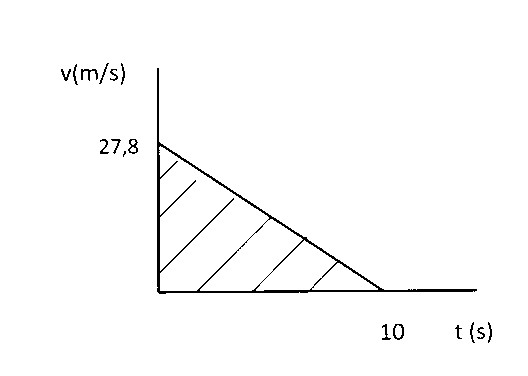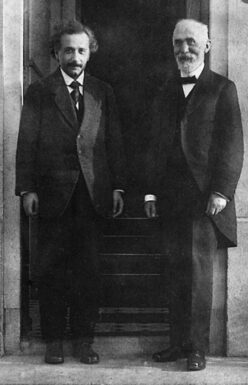<v>= Δx/Δt
- <v> average velocity in ms-1
- Δx displacement in m (x final position minus x initial position)
- Δt elapsed time in s
Example
Someone runs 100 m in 15 s. Then he runs 40 m back in 10 s.
Find the average velocity.
<v>= Δx/Δt = 60 (!) / 25 = 2.4 m/s
One-dimensional motion with constant velocity
Δx = v Δt x – x0 = v t s=v t
One-dimensional motion with constant acceleration
a = Δv/Δt v = V0 + at
- Δv final velocity minus initial velocity in ms-1
- a acceleration in ms-2
- v0 initial velocity in ms-1
Δx = v0t + ½at2 x = x0 + v0t + ½at2 s = v0t + ½at2
Examples
- A car accelerates from rest to a velocity of 90 km/h in 15 s.
Find the displacement during this time.
v = 90 km/h = 25 m/s
a = Δv/Δt = (25-0)/(15-0) = 1.67 ms-2
s = ½ a t2 = ½ 1.67 152 = 188 m = 1.9 x102 m
2. A car with a velocity of 100 km/h is braking and stopped after 10 s
Find the displacement during these 10 s.
The initial velocity is 100 km/h = 27.8 m/s
You can calculate the stopping distance in different ways
a. For a movement with constant acceleration we may write:
<v>= (v1 + v2)/2 = (27.8 + 0)/2 = 13.9 m. s = <v> t = 13.9 x 10 = 139 m = 1.4.102 m
b. a = Δv/Δt = (0 – 27.8)/10 = – 2.78 m/s2 (velocity decreases)
s = v0 t + ½ a t2 = 27.8 x 10 + ½ x – 2.78 x 102 = 278 – 139 = 139 m = 1.4.102 m
c. The displacement is equal to the area under a velocity –time graph ( the shaded area in the drawing )
s = ½ x 27.8 x 10 = 139 m = 1.4.102 m

